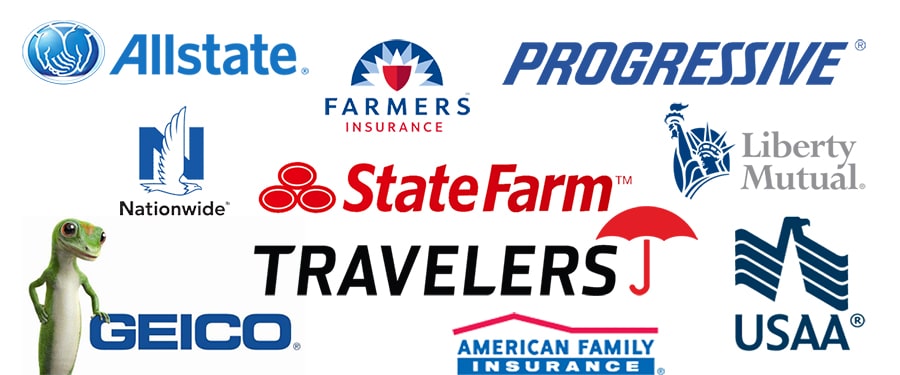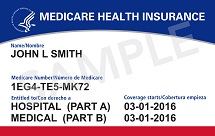
What you need to know about car insurance
Personal Injury Claim
A person injured as the result of the negligence of another party is entitled to recover:
The insurance company of the at-fault driver is responsible to pay such claim up to the amount of liability coverage the insured has purchased. As noted above, the minimum coverage in Maryland provides up to $30,000 of coverage to an injured person and up to $60,000 of coverage in the event that more than one person is injured in an accident.
Many personal injury claims significantly exceed $30,000. Any case involving a broken bone, an injury to a spinal disk, or even any significant "soft tissue injury" results in a claim exceeding $30,000.
The insurance company does, however, have an obligation to attempt to settle a claim within the amount of liability coverage in order to prevent their insured from potentially being responsible for any judgment in excess of the amount of that coverage. In those instances where a court judgment is rendered in excess of the amount of liability coverage, the individual is personally responsible for the additional amount.
Property Damage Claim
The at-fault driver is also responsible for the property damage sustained by the other party, which typically involves damage to a vehicle. The claim for damages to a motor vehicle is the lesser of the cost of repair or the fair market value of the vehicle.
In other words, if it costs more to repair a vehicle than the vehicle is worth, the claim is limited to the value of the vehicle.
The damaged party is also entitled to recover reasonable towing, storage, and rental expense. The damaged party may also be entitled to recover the diminution of value of their vehicle if the vehicle is repaired.
As noted above, the minimum amount of coverage required for property damage is $15,000. Although such coverage would usually be sufficient, there are many accidents where the damaged vehicle is worth more than $15,000, and/or where there are several other vehicles damaged in the accident.
There are four broad categories of insurance
There are four broad categories of insurance that apply to a Maryland automobile insurance policy.
Including coverage for:
1. Liability Coverage
This coverage applies if an insured, or anyone operating the insured vehicle with the permission of the insured, is at fault in a motor vehicle accident.
This coverage is mandatory and the minimum coverage required in Maryland is $30,000/$60,000 ($30,000 per person, $60,000 per accident) for a personal injury claim and $15,000 for a property damage claim. This coverage is for the benefit of the person damaged as a result of the negligence of the insured driver.
2. Property damage coverage
Property damage coverage is not required by law, although a lender will require such coverage in order to protect their collateral. Keep in mind that in those situations where an accident is the other driver’s fault, the other driver’s insurance company would be responsible for such damage under their liability coverage.
Two basic coverages apply to property damage coverage: collision and comprehensive.
2.1 Collision coverage
Collision coverage applies if a vehicle is involved in an accident which results in damage to the vehicle.
Two basic coverages apply to property damage coverage: collision and comprehensive. Collision coverage applies if a vehicle is involved in an accident which results in damage to the vehicle. Comprehensive coverage applies in those circumstances where a vehicle is damaged other than in a collision, or more typically when a vehicle is stolen. The extent of the claim is limited to the lesser of the cost of repair or the fair market value of the vehicle.
2.2 Comprehensive coverage
Comprehensive coverage applies in those circumstances where a vehicle is damaged other than in a collision, or more typically when a vehicle is stolen. The extent of the claim is limited to the lesser of the cost of repair or the fair market value of the vehicle.
2.3 Gap insurance
If a vehicle is declared a total loss after an accident, the collision and comprehensive coverage will only pay up to the fair market value of the vehicle.
Many times the outstanding loan, especially on a new vehicle, may be greater than the fair market value of the car. This would result in a person being "underwater" on the loan in the event the car is totaled, and unfortunately the individual would still be responsible for paying the difference.
Depending on your financial circumstances, you may want to consider purchasing gap insurance at the time you purchase your next vehicle. This one time charge, which is rolled into the total loan amount at the time of purchase, will pay the difference between the value of the fair market value of your car and the outstanding balance on your loan.
3. Uninsured motorist coverage
This mandatory coverage applies in the event that a person is involved in an accident which is the other person’s fault, but the other person does not have insurance, or in those circumstances where the other person cannot be identified as in a hit and run accident.
Uninsured motorist coverage also provides "underinsured" coverage in those situations where the at-fault driver does not have sufficient insurance to pay the value of a claim. This coverage applies to the insured, permissive drivers of the insured vehicle, and any passengers in the car.
The minimum coverage required by law is in the same amount as the minimum liability coverage, which is $30,000/$60,000 for personal injury and $15,000 for property damage. By law, an insured may not purchase more uninsured motorist coverage than liability coverage.
3.1 About underinsured coverage
It is in everyone’s best interests to purchase enhanced underinsured coverage in the same amount of uninsured motorist coverage as liability coverage. The premium for this coverage is only a fraction of the premium charged for liability coverage. As opposed to liability coverage, which in theory only protects a person against a judgment, uninsured motorist (UM) coverage protects the insured by paying hard cash for the value of the claim in those instances where the other driver is uninsured.
In addition, and as is often the case, the "underinsured" coverage, which by law is part of uninsured coverage, protects a person whose claim exceeds the amount of liability coverage the at-fault driver has.
For example, if a person has $100,000 of enhanced uninsured coverage and is involved in an accident with a person who has only $30,000 of liability coverage, the injured party would be entitled to recover from his own insurance company the value of his claim which exceeds $30,000 up to an additional $100,000 of coverage, for a total of $130,000. Purchasing standard uninsured motorist coverage would only protect the value of the claim in excess of $30,000, up to $100,000.
4. No-fault benefits
Until 1986, every insurance policy was required to include at least $2,500 of no-fault coverage, which in Maryland is known as Personal Injury Protection (PIP). This coverage provides protection for each person in a vehicle which is involved in an accident for payment of medical bills and lost wages up to the amount of coverage. An insured may now waive PIP coverage on his vehicle for all named insureds and all resident relatives over the age of 16. A person cannot waive PIP coverage for any other person in his vehicle.
PIP coverage applies regardless of who was at fault in the accident. In those circumstances where the other driver was at fault, a person may make both a PIP claim and a liability claim against the other driver’s insurance company. By law, making a PIP claim may not have a negative effect on a person’s future insurance rates.
It used to be that few of our clients waived full PIP coverage on their policies. It seems that most insurance agents would encourage their clients not to waive this important coverage, especially since the cost of the coverage is minimal. However, more and more people no longer have insurance agents, but purchase or renew their coverage online. Without advice, it is easy for a person to affirmatively elect to waive his PIP coverage with one keystroke.
This is particularly true with Elephant, Geico, Maryland Auto, and Progressive policies, as they can be somewhat misleading.
We strongly recommend that you purchase full PIP coverage, even if you have health insurance to cover you medical bills, as PIP coverage will also pay 85% off your documented lost wages.
Payment for medical bills will be paid directly to you if those bills have already been paid by your health insurance.

Need our legal advice?
Call us for a free consultation
Slatkin & Lupo
Law Offices





